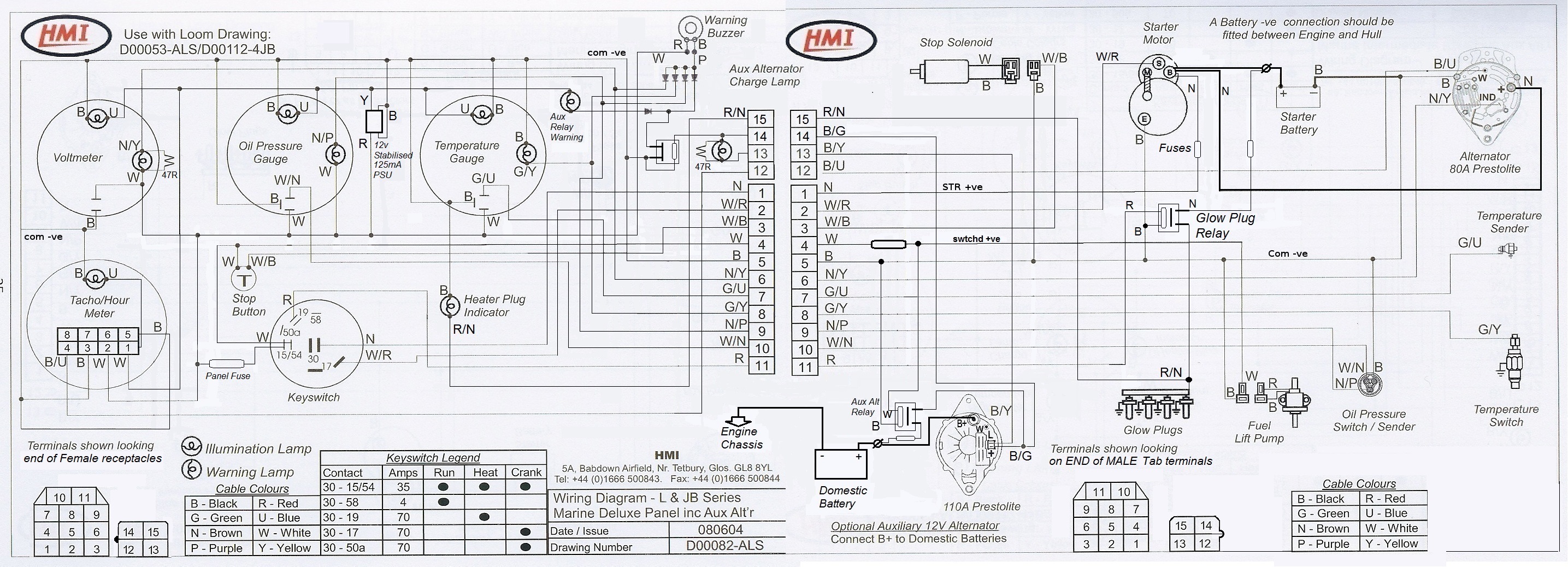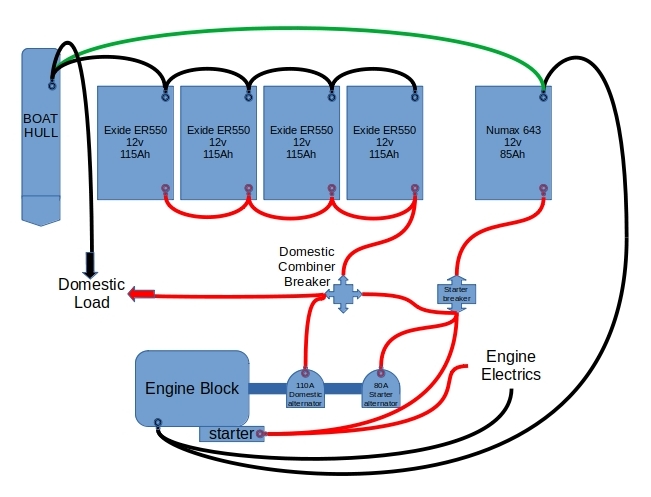Original Design
Here is a list of design faults in the original Engine wiring.
- The current for the glow-plugs should not be routed through the starter switch.
- The Sense wire of the Domestic Alternator should be connected to the Domestic Battery, not the Starter battery.
- The Lamp wire of the Domestic Alternator should be connected to the Domestic Battery, not the Starter battery.
- Instruments and wires should be protected by appropriate fuses.
At this point, although I had some ideas for re-designing the loom, I contacted Tony Brooks, who writes for Canal Boat, to seek his advice. His replies were invaluable, his years of experience come through!
- Yes, the glow-plugs should be fed directly from the starter battery via their own relay, which should not be mounted on the Engine block as the engine vibration will damage the relay.
- Yes, the Domestic Alternator’s Sense and Lamp wires should be connected to the Domestic battery, not the starter battery. But if you change this you should wire the connection via a relay controlled by the ignition switch or the alternator will discharge the domestic battery over time when the engine is not running. And again do not mount the relay on the engine block.
- Yes, add appropriate fuses.
The new Design
Following Tony’s excellent advice there are now three extra relays, and four fuses in a new and extended loom that has two extra wires in it.
- The 30A wire from the starter switch that used to feed the Glow-plugs now controls a 100A relay mounted on the battery box adjacent to the engine.
 A new 60A wire connects the Starter battery through a 50A fuse to the relay and from there directly to the glow plugs. A new 16A wire connects the glow plugs to the heater lamp on the console, which lights up when the relay activates.
A new 60A wire connects the Starter battery through a 50A fuse to the relay and from there directly to the glow plugs. A new 16A wire connects the glow plugs to the heater lamp on the console, which lights up when the relay activates. - A new 30A relay, mounted on the battery box adjacent to the domestic alternator, connects the Domestic battery, via a new 3A fuse, to the Domestic alternator sense wire.
 The relay operates when the ignition switch is turned on.
The relay operates when the ignition switch is turned on. - The new relay also connects the Domestic battery, via a new wire in the loom, to the battery side of the Aux Alternator Warning lamp on the console. Thus supplying the Aux Alternator lamp from the correct (Domestic) battery.
- A new relay in the console is connected to the warning buzzer and a new warning lamp on the console. The new lamp lights and the warning buzzer sounds if the new domestic alternator relay in 2 and 3 above fails to operate.

- All of the console instruments and warning lamps are fed through a new 3A fuse mounted on the console.
- A new 3A fuse protects the feed from the ignition switch to the new domestic alternator relay and the fuel pump.

- The Original 40A fuse next to the Starter motor has been left as-is as the starter motor relay takes about 35 Amps to operate.

The next time something fails causing high currents, I will need to spend 10 minutes changing a fuse, rather than 3 months re-wiring the engine!
And Finally
What I should have done in the first place, rather than remove the green link connecting the Starter and Domestic batteries: Reposition it!

